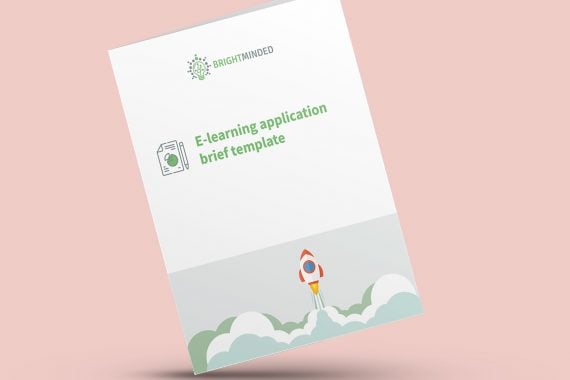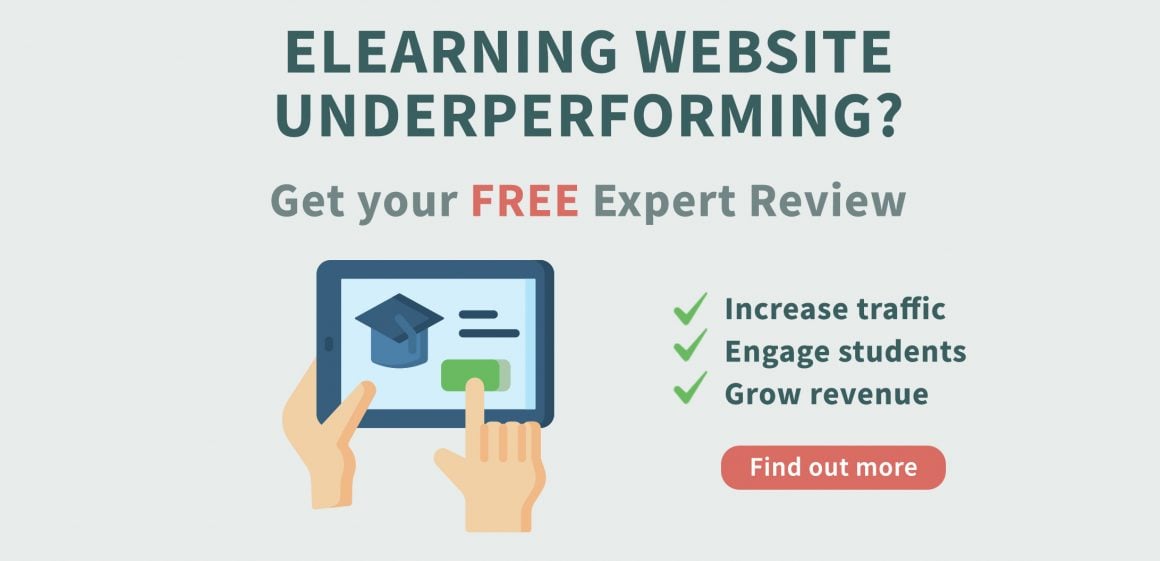How to build elearning websites that succeed
Creating an elearning website lets your business earn more from its knowledge. It helps you tap into an online learning market that was already growing strongly before the pandemic and has hit the stratosphere since. But producing a successful, custom e-learning solution takes careful planning, great content, and the best development partner. Here’s how to plan for success.

Index
- Introduction: the demand for elearning and virtual learning
- Start with the audience and your content
- The technology is the step that will follow
- A word on potential pitfalls
- The importance of finding the right partner
TL;DR summary:
- E-learning demand is booming: The global e-learning market is projected to grow from a median projection of $320 billion to 336 and 400 billion dollars in 2026.
- Start with audience and content: identify your target learners, their needs, and the course content, formats, and interactivity that will engage them.
- Technology follows requirements: choose your platform and tools based on content, features, delivery methods, and integration needs, not the other way around.
- Plan carefully to avoid pitfalls: budget, timelines, ongoing content updates, accessibility, and user experience are critical to a successful e-learning platform.
- Partner wisely: work with an experienced development partner to ensure long-term success, engagement, and a tailored learning experience for your audience.
Introduction: the demand for elearning and virtual learning
You’ll no doubt already understand the massive demand for e-learning across the world. The latest projections of the global e-learning market reveal an exceptional growth. For 2025, the estimates converge to a range of 295 to 354 billion dollars, with a median projection of $320 billion according to Straits Research. This dynamic is further accelerated in 2026, where the market is expected to get to anything between 336 and 400 billion dollars, according to analyses by IMARC Group.
New technologies and more widespread internet access are among the driving factors for continued growth, and, as we’ve previously discussed, the pandemic is further accelerating things.
So it remains a big market, and you’re a knowledge-rich organisation hoping to create or improve your e-learning presence. To build an elearning website may seem like a natural progression, but there’s more to creating a successful one than simply putting existing courses or knowledge ‘online’.
When developing an e-learning solution, we work closely with our clients to help them plan for success as they build their online learning platform. I want to pass on some of our most important insights so that businesses like yours can get the best results from their e-learning programme.
Start with the audience and your content
Being a knowledge leader or pioneer in your field positions you well for success in e-learning. Already being an accredited training or education provider, it’s essential to understand the challenge in building this into a successful elearning programme.
The first position for any bespoke e-learning solution is identifying whether your target market exists and what it looks like. You may be able to frame the look and feel of your elearning solution within existing style guidelines and personas, but that’s not a substitute for proper, targeted research. Before investing, identify your target audience and its needs, and be sure it’s strong enough to deliver a return on your investment.
Your understanding of the target audience will help you define the content your courses will need. Obviously, this means identifying the course subject, content and objectives, and the content that will satisfy your learner, but it should include consideration of formats and delivery methods.
You might have offline courses or internal training programmes to work from, or you might be starting from square one. Digital delivery means you can integrate video, text, images or audio into a coherent e-learning experience. It helps to think about interactivity and elements like tests or quizzes to test learners’ comprehension.
With your content identified, it’s essential to consider how you’ll deliver it. In the first instance, this means setting the objectives for your custom e-learning solution. Perhaps you want to create the best e-learning solution, for example, or your focus is on effortless user experience and clearly defined customer journeys.
It’s helpful to build out a list of the functionality you’ll require, but you shouldn’t overlook fundamental questions, including:
- How many users are you targeting?
- Where are they located geographically?
- Will you offer subscription-based courses or different content tiers? What should their characteristics be?
At this stage, you should already be considering the resources you have in-house and how you’ll use them. It’s important to assign the ownership of core responsibilities, such as content production and design and development. You’ll also need to consider how course content will be managed and updated in the future.
Photo by Nick Morrison on Unsplash
The technology will follow
These content, feature and delivery requirements will determine the correct technology choices for your e-learning platform, not the other way around. In other words, you might need to create an e-learning website in WordPress, but you should identify that as the best solution, rather than starting with it as an objective.
An important part of our work on any e-learning project is to tease out additional requirements, such as those that commonly crop up when clients are migrating or merging an existing system. They’re an essential consideration, too, when planning to integrate with any current technology, such as a CRM, accounting or analytics platform. E-learning website development rarely starts from a truly blank page, so we want to know about these kinds of factors, which can add complexity and influence technology choices.
We also urge our customers not to overlook user experience considerations and identify and meet special accessibility requirements. This might include considering the needs of dyslexic, partially sighted or hard-of-hearing users as they interact with your platform and courses.
A word on potential pitfalls
Giving consideration to the requirements above is essential to creating successful e-learning websites, but it’s not a guarantee. There are some potential traps for the unwary.
Firstly, it’s important to be realistic about the budget you have available to achieve your objectives. This needs to cover the initial platform development and content creation and the ongoing maintenance of both. You should also allow for post-launch costs, such as needing to scale the technology or implement security updates.
Similarly, you’ll need to be realistic about the timelines involved – both for the platform’s initial development and population and to maintain it and the course material afterwards. In our experience, it’s essential to carefully manage content auditing and content creation, which can easily hold up the launch after the technical implementation is ready to go.
To a large extent, your ability to manage time and budget hinges on the quality of the project management you can put in place. It’s critical to have the right leadership, ownership and responsibilities in the team. The project manager should help plan and orchestrate resources to get the best from everyone.
Partnering up
I’ve saved one major consideration until last, but as specialists in e-learning solutions, it’s one dear to our hearts: finding the right partner.
Your relationship with the team that develops your bespoke e-learning platform extends beyond the planning, implementation and delivery of the result. It’s a long-term part of your business and of critical importance.
“BrightMinded created a cutting edge learning management system for my business – and can probably put their minds to almost anything.”
Katy Lindsay, Founder & CEO, Aptimore
That’s why it’s imperative to choose a partner with a proven track record.
BrightMinded is adept at designing bespoke e-learning software that combines a wide range of features. We’ve extensive experience tailoring solutions specifically for learners and their requirements from learning management systems, content management systems, learning content management systems or learning record systems.
BrightMinded’s custom e-learning solutions focus on creating high learner engagement. We help streamline the learning journey, supporting intuitive and easy content delivery and making courses more compelling.
Fundamentally, we build platforms that help clients realise the value of their knowledge. And we support their learners to benefit from the best digital materials, delivered in the most appropriate ways.
Planning a new e-learning website or virtual learning application?
Download our free briefing template to help make it a success!

This briefing template will help you to:
Understand all the questions you should ask yourself when creating an e-learning application.
Get all your plans and requirements on paper to ensure you have considered everything.
Maximise the probability of success of your new application.


